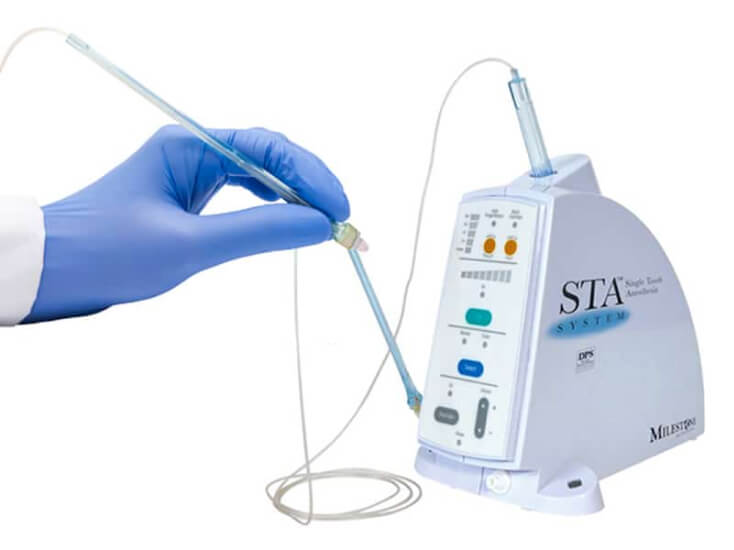LANAP (laser-assisted new attachment procedure) can help ease symptoms of periodontal disease without invasive surgery. Unlike traditional periodontal surgery, LANAP treatment is non-invasive, more effective, and more comfortable for patients. NYC Periodontics & Implant Dentistry
Our New York City periodontist, Dr. Scott Kissel, is here to help you treat gum disease. If you’re suffering from symptoms such as bleeding gums or loose teeth, contact our dental office in New York City by calling 212-702-9088 to schedule your appointment. We proudly serve patients throughout Manhattan, including Brooklyn, Queens, or Long Island.
LANAP is a revolutionary laser treatment for gum disease that offers a minimally invasive alternative to traditional gum surgery. Developed by Dr. Robert Gregg and Dr. Delwin McCarthy, LANAP uses a specialized laser to target and remove diseased tissue while preserving healthy gum tissue. The primary purpose of LANAP is to remove diseased gum tissue and promote the regeneration of healthy tissues, offering a more comfortable alternative to traditional gum surgery. This innovative treatment is particularly effective for moderate to severe cases of periodontal disease, making it a valuable option for many patients.
Most patients suffering from gum disease can benefit from the LANAP protocol, making it an appealing option for those looking for a less invasive and more effective alternative to traditional periodontal surgery when treating gum disease.
The success of LANAP treatment lies in its well-structured and systematic approach. The process includes:
Typically, each session of LANAP lasts between 2 to 3 hours, providing thorough and precise treatment. To learn more about periodontal disease treatment, contact our New York City periodontist today.
LANAP utilizes the PerioLase MVP-7 1064 Nd:YAG dental laser, a sophisticated piece of technology specifically designed for laser periodontal therapy. This laser operates in a free-running pulsed mode and features seven variable pulse durations, allowing it to target and remove infected gum tissue while preserving the healthy tissue around it. The precision of this laser is one of the key factors that make LANAP a minimally invasive laser treatment. It penetrates up to 4 mm beyond the tissue surface, effectively eradicating bacteria and promoting bone and gum tissue regeneration.
The PerioLase MVP-7 laser offers the following benefits:
One major advantage of LANAP is the considerable reduction in pain and discomfort during and after the procedure. Unlike traditional gum surgery, which often involves significant cutting and stitching, LANAP offers the following benefits:
The minimal invasiveness characteristic of LANAP enables a substantially shortened recovery period relative to traditional gum surgery. Most patients can resume their daily activities immediately or within 24 to 48 hours after the LANAP procedure. This is a stark contrast to the extended recovery times often associated with conventional surgical procedures, which can require several days or even weeks of downtime.
The laser used in LANAP not only treats the diseased tissue but also promotes faster healing, allowing patients to:
By preserving healthy tissue, LANAP can:
While LANAP is generally safe, potential risks and considerations include:
As with any medical procedure, LANAP carries potential side effects, typically milder than those associated with traditional surgery. Common side effects include:
These symptoms are usually temporary and can be managed with over-the-counter pain medications and proper post-operative care.
The process of determining LANAP candidacy involves an evaluation of the stage and severity of your gum disease. Ideal candidates for LANAP include patients who:
LANAP is particularly suitable for patients with moderate to severe gum disease, as it effectively treats even advanced cases. The laser therapy can penetrate deep below the gum line, reaching and regenerating bone loss up to 6mm deep. This makes LANAP a viable option for many patients who might otherwise require more invasive treatments.
However, LANAP may not be suitable for those with extremely advanced gum disease or those with significant gum damage beyond 6mm. In these cases, more aggressive surgical grafting may be required before considering LANAP. Alternative treatments, such as traditional flap surgery or scaling and root planing, may be more appropriate for these patients.
If you want to learn more about your candidacy for LANAP treatment, don’t hesitate to contact our New York City periodontist by calling 212-702-9088.
Proper post-treatment care in LANAP is vital for a seamless healing process and optimal outcomes. Patients can expect:
Patients should follow these post-treatment instructions:

LANAP uses a laser to remove diseased tissue while preserving healthy tissue, making it less invasive than traditional gum surgery. Unlike conventional methods that require cutting and stitching, LANAP promotes quicker healing with less pain and swelling, offering a more efficient and comfortable treatment for gum disease.
Most patients experience minimal discomfort during and after the LANAP procedure. Local anesthesia ensures a pain-free experience, and any post-treatment sensitivity typically subsides quickly, making recovery easier compared to traditional gum surgery.
LANAP is ideal for moderate to severe gum disease. For early-stage gum disease, less invasive treatments may be sufficient. LANAP is effective for advanced cases where significant damage to the gums and bone has occurred.
The procedure typically lasts 1 to 2 hours, depending on the severity of the gum disease. More extensive treatments may take longer, but most patients can return to normal activities the following day.
If you’re struggling with gum disease and want to explore LANAP as a treatment option, contact our dental office today to schedule a consultation. Our experienced team is here to provide you with the best care and help you achieve optimal oral health. We proudly serve patients throughout Manhattan, including Brooklyn, Queens, or Long Island. Contact our dental office in New York City today by calling 212-702-9088.
Quick Links
Open Hours
Monday to Friday
8:30am – 5pm